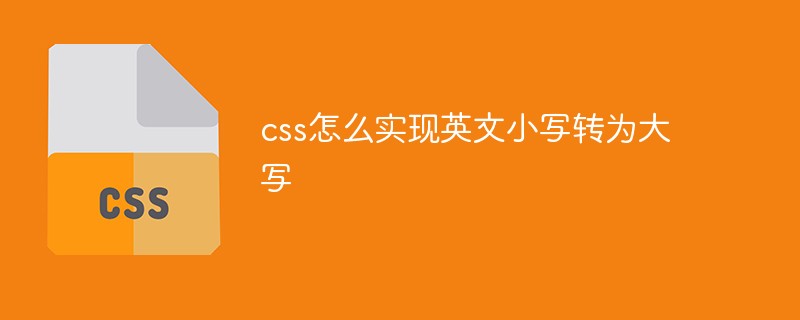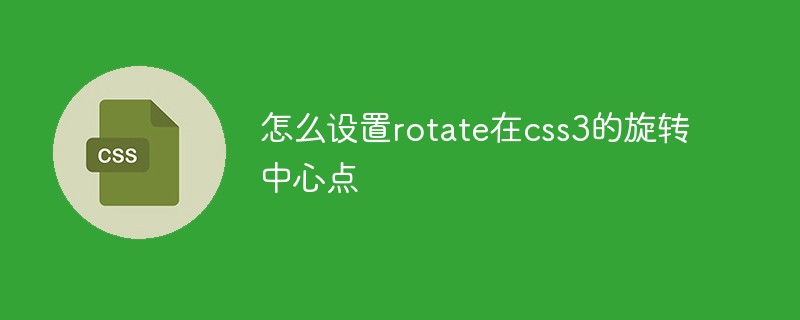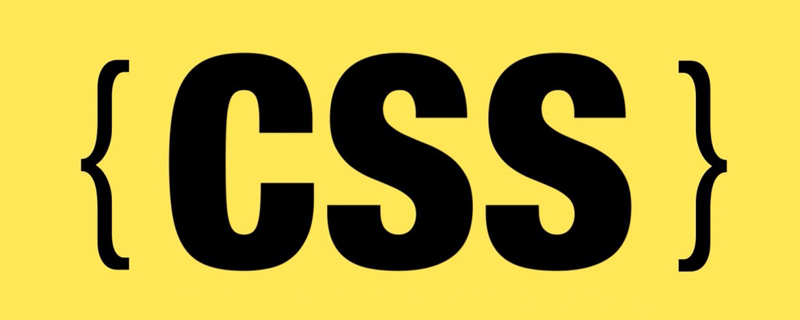Gradient attributes include: 1. Linear gradient "linear-gradient()", the syntax is "linear-gradient(angle, color, color)"; 2. Radial gradient "radial-gradient()", The syntax is "radial-gradient(position, color, color)".

The operating environment of this tutorial: Windows 7 system, CSS3&&HTML5 version, Dell G3 computer.
Gradient can make the element background more spiritual and lively. Although we can use background images to present gradient effects, it is not flexible enough. When we want to change the color, we need to use a picture editor to re-edit. For gradients, you can change the color directly in the code. CSS3 provides two gradient methods, namely linear gradient (linear-gradient) and radial gradient (radial-0gradien).
1. Linear gradient (linear-gradient)
Linear gradient is a color gradient along a certain direction. You can use left, right, up, down, and diagonal lines.
Linear gradient syntax:
background: linear-gradient(direction, color1, color2 [stop], color3...);
1. direaction: indicates the direction of linear gradient. There are the following three expression methods.
(1) Gradient direction
- to left: Set the gradient from right to left.
- to bottom: Set the gradient from top to bottom. It's the default value.
- to right: Set the gradient from left to right.
- to top: Set the gradient from bottom to top.
It can also be the four diagonal directions: to left top, to left bottom, to right top, to right bottom.
(2) Direction starting point
- top: Set the gradient from top to bottom. It's the default value.
- bottom: Set the gradient from bottom to top.
- left: Set the gradient from left to right.
- right: Set the gradient from right to left.
It can also be the four diagonal directions of left top, left bottom, right top, and right bottom.
(3) Angle (angle)
Angle is expressed in numerical units, and the unit is deg. All colors start from the center, 0deg is the direction to top, clockwise is positive, counterclockwise is negative.
- 0deg is equivalent to to top
- 90deg is equivalent to to right
- 180deg is equivalent to to bottom, this is the default value
- 270deg or - 90deg is equivalent to to left
. Correspondingly, there are 45deg, 135deg, 225deg, and 315deg to represent the diagonal direction, but using angles to represent the direction is more flexible than the given horizontal and vertical direction. It can be used as needed. to adjust the angle to achieve the desired effect.
2. color- *: Represents the transition color in the gradient. Generally, the first one represents the starting color of the gradient, the last one represents the ending color of the gradient, and the middle represents the intermediate transition color.
3. Stop: Stop can be added after color. Stop can be a percentage value or a pixel value, indicating that a certain color is fixed at the stop position, as follows:
background: linear-gradient(to right, blue, green 20%, yellow 50%, purple 80%, red); //渐变起始颜色是蓝色,当过度到20%时为绿色,也就是说在20%处恰好是绿色,然后继续渐变过度到黄色,到50%处恰好是黄色,后面同个道理,直到结束颜色红色,正好处于100%处。
2. Repeating-linear-gradient (repeating-linear-gradient)
Speaking of linear gradients, we have to mention repeating linear gradients. Sometimes we want to generate the stripe effect as shown below. Our most convenient The method is to repeat the linear gradient.

Grammar code:
background: repeating-linear-gradient(#f00 0,#f00 10%,#ff0 10%,#ff0 20%);
The above red color starts from 0 and is still red when it reaches 10%, so a red stripe is formed, which changes to red after 10% Yellow is still yellow until 20%, so yellow stripes are formed at this time, and then the 20% red and yellow stripes will be repeatedly gradient during rendering, giving the effect of alternating red and yellow stripes.
We can also add the direction
background: repeating-linear-gradient(45deg,#f00 0,#f00 10%,#ff0 10%,#ff0 20%);

3. Radial-gradient
A radial gradient starts from a central point and creates a gradient effect along all sides. It is defined by its center point, edge shape outline and position, and color value end points (color stops).

When we set multiple colors for a gradient, they will equally divide the 100% area to gradient. Of course, in addition to percentages, we can also use specific pixels to set this size. The size of the pixel setting refers to the distance extending outward from the center of the gradient circle.
Radial gradient syntax:
<radial-gradient> = radial-gradient([ [<shape> || <size>] [ at <position> ]? , | at <position>, ]?<color>[stop]?[ ,<color>[stop]?]+)
The meanings of various attributes are as follows:
// 圆心位置
<position> = [ <length> | <percentage> | left | center | right ]? [ <length> |
<percentage> | top | center | bottom ]? //默认处于中心点
// 渐变形状
<shape> = circle | ellipse //默认是ellipse
// 渐变大小
<size> = <extent-keyword> | [ <circle-size> || <ellipse-size>]
<extent-keyword> = closest-side | closest-corner | farthest-side | farthest-corner
<circle-size> = <length>
<ellipse-size> = [ <length> | <percentage> ]{2}
<shape-size> = <length> | <percentage>
// 渐变颜色及颜色位置
<color>[stop]? = <color> [ <length> | <percentage> ]?The above needs to be explained in detail
When we define the gradient You can directly define the shape of the gradient, but in addition to this method, you can also determine the shape of the gradient by passing in a specific value for size. The specific instructions are as follows:
1. When passing in a size parameter size or two identical When it is worth size, it means that the gradient shape is a circle.
background: radial-gradient(60px,#f00 0,#ff0 100%);

2. When two size parameters with different sizes are passed in, it means that the gradient shape is an ellipse.
background: radial-gradient(100px 60px,#f00 0,#ff0 100%);

四、重复径向渐变(repeating-radial-gradient)
上面再说线性渐变时有说到线性渐变具有重复线性渐变,为径向渐变同样具有重复径向渐变,先看一个简单例子。
background: repeating-radial-gradient(circle at center,#f00 0,#f00 10%, #ff0 10%,#ff0 20%);

重复径向渐变总体上与重复线性渐变差不多,只是重复线性渐变是一个方向上的重复渐变,不论是水平垂直还是对角线,如下图,左边为0%,右边为100%。
然而重复径向则是以圆心为中心点,以放射性方式渐变,中心点为0%,圆边界为100%。
关于上面重复径向渐变是如何生成条纹相间的就 不多加述说,原理和重复线性渐变相同。
下面给出一个重复径向渐变的实用例子,使用重复径向渐变生成一个唱片的效果 。
HTML:
<p class='record-container'>
<p class='record'></p>
</p>CSS:
.record-container {
display: inline-block;
overflow: hidden;
width: 400px;
height: 300px;
border-radius: 10px;
box-shadow: 0 6px #99907e;
background: #b5ac9a;
}
.record {
position: relative;
margin: 19px auto;
width: 262px;
height: 262px;
border-radius: 50%;
background: linear-gradient(30deg, transparent 40%, rgba(42, 41, 40, .85) 40%)
no-repeat 100% 0, linear-gradient(60deg, rgba(42, 41, 40, .85) 60%, transparent 60%)
no-repeat 0 100%, repeating-radial-gradient(#2a2928, #2a2928 4px, #ada9a0 5px,
#2a2928 6px);
background-size: 50% 100%, 100% 50%, 100% 100%;
}
.record:after {
position: absolute;
top: 50%;
left: 50%;
margin: -35px;
border: solid 1px #d9a388;
width: 68px;
height: 68px;
border-radius: 50%;
box-shadow: 0 0 0 4px #da5b33, inset 0 0 0 27px #da5b33;
background: #b5ac9a;
content: '';
}
推荐学习:css视频教程
The above is the detailed content of What are the gradient attributes in css3. For more information, please follow other related articles on the PHP Chinese website!
 css ul标签怎么去掉圆点Apr 25, 2022 pm 05:55 PM
css ul标签怎么去掉圆点Apr 25, 2022 pm 05:55 PM在css中,可用list-style-type属性来去掉ul的圆点标记,语法为“ul{list-style-type:none}”;list-style-type属性可设置列表项标记的类型,当值为“none”可不定义标记,也可去除已有标记。
 css与xml的区别是什么Apr 24, 2022 am 11:21 AM
css与xml的区别是什么Apr 24, 2022 am 11:21 AM区别是:css是层叠样式表单,是将样式信息与网页内容分离的一种标记语言,主要用来设计网页的样式,还可以对网页各元素进行格式化;xml是可扩展标记语言,是一种数据存储语言,用于使用简单的标记描述数据,将文档分成许多部件并对这些部件加以标识。
 css3怎么实现鼠标隐藏效果Apr 27, 2022 pm 05:20 PM
css3怎么实现鼠标隐藏效果Apr 27, 2022 pm 05:20 PM在css中,可以利用cursor属性实现鼠标隐藏效果,该属性用于定义鼠标指针放在一个元素边界范围内时所用的光标形状,当属性值设置为none时,就可以实现鼠标隐藏效果,语法为“元素{cursor:none}”。
 rtl在css是什么意思Apr 24, 2022 am 11:07 AM
rtl在css是什么意思Apr 24, 2022 am 11:07 AM在css中,rtl是“right-to-left”的缩写,是从右往左的意思,指的是内联内容从右往左依次排布,是direction属性的一个属性值;该属性规定了文本的方向和书写方向,语法为“元素{direction:rtl}”。
 css怎么实现英文小写转为大写Apr 25, 2022 pm 06:35 PM
css怎么实现英文小写转为大写Apr 25, 2022 pm 06:35 PM转换方法:1、给英文元素添加“text-transform: uppercase;”样式,可将所有的英文字母都变成大写;2、给英文元素添加“text-transform:capitalize;”样式,可将英文文本中每个单词的首字母变为大写。
 css怎么设置i不是斜体Apr 20, 2022 am 10:36 AM
css怎么设置i不是斜体Apr 20, 2022 am 10:36 AM在css中,可以利用“font-style”属性设置i元素不是斜体样式,该属性用于指定文本的字体样式,当属性值设置为“normal”时,会显示元素的标准字体样式,语法为“i元素{font-style:normal}”。
 怎么设置rotate在css3的旋转中心点Apr 24, 2022 am 10:50 AM
怎么设置rotate在css3的旋转中心点Apr 24, 2022 am 10:50 AM在css3中,可以用“transform-origin”属性设置rotate的旋转中心点,该属性可更改转换元素的位置,第一个参数设置x轴的旋转位置,第二个参数设置y轴旋转位置,语法为“transform-origin:x轴位置 y轴位置”。


Hot AI Tools

Undresser.AI Undress
AI-powered app for creating realistic nude photos

AI Clothes Remover
Online AI tool for removing clothes from photos.

Undress AI Tool
Undress images for free

Clothoff.io
AI clothes remover

AI Hentai Generator
Generate AI Hentai for free.

Hot Article

Hot Tools

SublimeText3 Mac version
God-level code editing software (SublimeText3)

SAP NetWeaver Server Adapter for Eclipse
Integrate Eclipse with SAP NetWeaver application server.

Atom editor mac version download
The most popular open source editor

mPDF
mPDF is a PHP library that can generate PDF files from UTF-8 encoded HTML. The original author, Ian Back, wrote mPDF to output PDF files "on the fly" from his website and handle different languages. It is slower than original scripts like HTML2FPDF and produces larger files when using Unicode fonts, but supports CSS styles etc. and has a lot of enhancements. Supports almost all languages, including RTL (Arabic and Hebrew) and CJK (Chinese, Japanese and Korean). Supports nested block-level elements (such as P, DIV),

SecLists
SecLists is the ultimate security tester's companion. It is a collection of various types of lists that are frequently used during security assessments, all in one place. SecLists helps make security testing more efficient and productive by conveniently providing all the lists a security tester might need. List types include usernames, passwords, URLs, fuzzing payloads, sensitive data patterns, web shells, and more. The tester can simply pull this repository onto a new test machine and he will have access to every type of list he needs.








